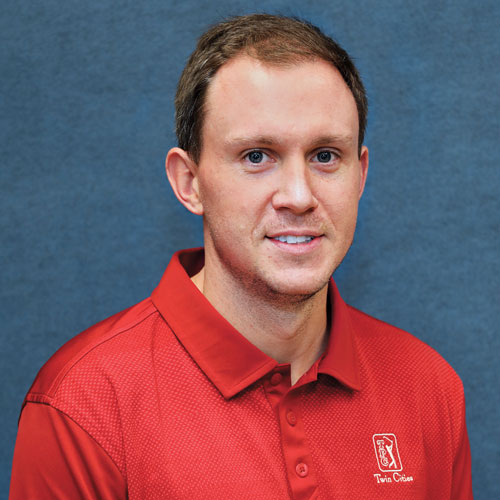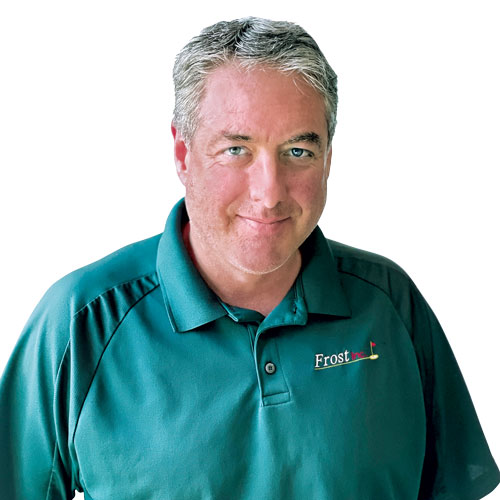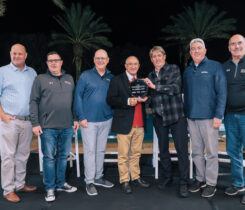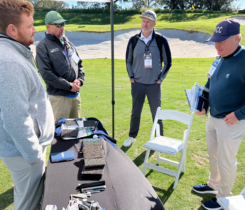How to reap the benefits of GPS technology

Chase Straw
As GPS technology becomes more prevalent in turfgrass management, Chase Straw, Ph.D., assistant professor, turfgrass management and physiology in Texas A&M University’s department of soil and crop sciences, believes golf course superintendents will reap many benefits.
Straw says the most immediate benefit superintendents will notice is the installation of GPS on maintenance equipment. Superintendents see location information on new equipment like autonomous mowers and GPS sprayers.
Small GPS units, which golfers place in their pockets, help superintendents better understand the foot traffic on their golf courses. Superintendents can use this information to identify highly managed areas that aren’t typically in play and convert them to native areas.
“GPS on golf carts has many benefits too. One of the greatest — particularly from a management standpoint — may be the ability to geofence areas of golf courses where golf cart traffic isn’t wanted,” Straw says. “Data-driven management is another benefit superintendents will notice, as a result of GPS technology.”
Straw says researchers utilize GPS-equipped sensors — from multispectral/thermal cameras on drones to soil moisture sensors — to identify and quantify variability across golf courses, leading to targeted applications of management inputs.
Of equal importance, Straw says aerial imagery from drones — along with other sensor data — helps superintendents scout for pests and turfgrass issues.
“The technology is improving, and more research is being conducted with data to utilize artificial intelligence and machine learning models to correctly identify issues and predict their occurrence or outbreak,” he explains. “This information will be valuable to superintendents so they can be on offense, rather than constant defense, with their management.”
He adds, “This should enable superintendents to have more informed decision making with their management inputs so that applications are made more efficiently.”

John Collins
E-Z-GO
John Collins
VP and general manager
Previously known as Textron Fleet Management, E-Z-GO’s Pace Technology, a GPS product lineup, partnered with GolfLogix, and superintendents manage their courses’ fleets and operations in real time. Through the GPS product lineup, they have various operational efficiencies, including geofencing capabilities to protect their courses’ grounds. Additionally, they can establish speed enforcement areas, ensuring golfers help maintain course conditions as they drive carts. And they’re able to locate carts from any place — at any time. The product lineup enables superintendents to constantly maintain their courses’ fleet vehicles, too. In doing so, they’re able to boost their equipment efficiency considerably, as they can utilize activity zones to analyze their colleagues’ travel time within their facilities and effectively manage their day-to-day workloads. Superintendents can monitor their vehicles’ maintenance requirements via the product lineup’s remote diagnostics offerings.

Kevin Hauschel
GreenSight Agronomics
Kevin Hauschel
Commercial agriculture/West Coast golf and sports lead
GPS technology helps superintendents scout for diseases and turf issues on their golf courses by allowing them to have an exact location to refer to. The industry started with GPS technology in handheld sensors, such as POGO and TDR, to measure moisture, salinity and temperature while also having a location for the reading. Now, thanks to further advancements in GPS technology, we’re beginning to add automation into the data collection process. The turf management industry currently has wireless, in-ground soil sensors like Soil Scout and above-ground technology via daily, automated drone flights from GreenSight. These technologies enable superintendents to scout their entire golf courses with one 20-minute drone flight. Or they can look at soil sensor information in real time, combined with drone imagery. All geographic information can be found — via GPS — in our TurfCloud digital job board, allowing superintendents to stay ahead of potential stresses or diseases.

Ken Rost
Frost Inc.
Ken Rost
Founder and CEO
Frost Inc. offers superintendents GPS technology that shows sprayer operators exactly where they have been and where they need to spray. The technology also enables control of each spray nozzle. By controlling every nozzle independently, superintendents’ applications are more accurate. Additionally, due to GPS controllers, superintendents have records of their applications, which can be saved and used as training tools for new operators or — upon request — provided to regulatory agencies. As far as scouting is concerned, superintendents can mark areas of higher or lower disease pressure. They can then prescribe different application rates for those areas, and the GPS sprayer will execute the prescription. With GPS technology, our sprayers also provide two nozzles at each nozzle position, allowing for a wider range of prescription rates and speeds.

David Anderson
John Deere Golf & Sports
Dave Anderson
Product manager, John Deere Turf Care
By incorporating GPS technology in daily practices, superintendents can save time and money. Specifically, our John Deere GPS PrecisionSprayers help decrease chemical usage. One of the most notable features of the GPS PrecisionSprayer is AutoTrac, which enables superintendents to spray predetermined areas in less time and with greater pass-to-pass accuracy. Superintendents using the GPS PrecisionSprayer can electronically capture all spray data and analyze the results. Automated documentation eliminates the need for manual recording and increases the accuracy of recording spray event information. Individual nozzle control helps minimize application errors and reduces operator fatigue, as they don’t need to focus on manually turning boom sections on and off. Reports and visual analytic tools help superintendents compare spray events and relate the state of the turf to specific conditions along with overall course health.












